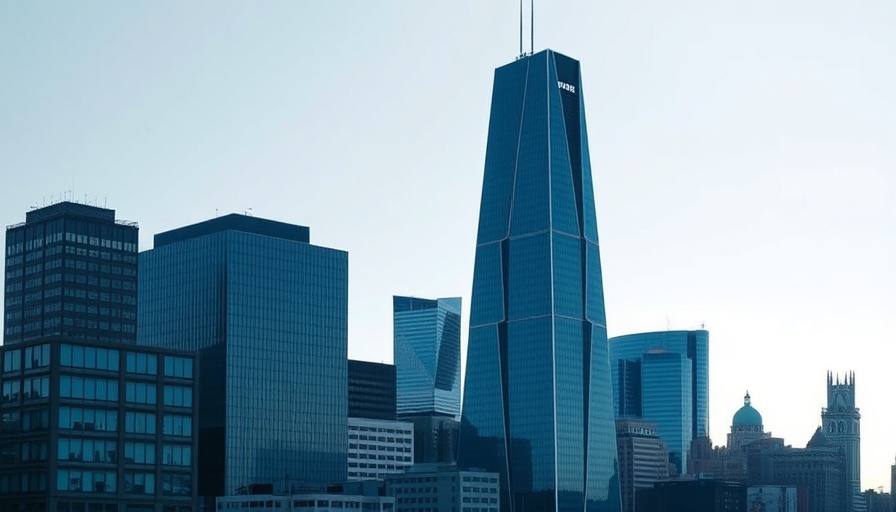
The Unexpected Fate of San Francisco's Mira
After much anticipation, San Francisco's twisting skyscraper, the Mira, has landed itself on a mortgage blacklist. Completed in 2019, this architectural marvel quickly became an icon of the city's skyline with its innovative design and prime location near the Bay Bridge. However, despite its popularity, the ongoing financial realities of the real estate market have left many prospective buyers and current owners in a tough situation.
The Rise of the Mira: A Look Back
The Mira was part of San Francisco's last major development boom before the pandemic dealt a heavy blow to the city's real estate market. Designed by renowned architect Studio Gang and developed by Tishman Speyer, the 39-story tower features a unique twisting façade, attracting homebuyers even in a declining market. By the end of last year, nearly all of its 392 units had been sold, affirming the demand for such coveted urban living spaces.
The Mortgage Blacklist: Understanding Its Implications
What led to the Mira's unfortunate blacklisting? This incident reflects a growing trend among lenders who are increasingly cautious in the wake of a series of real estate mishaps across the country. The confidential list maintained by Fannie Mae and Freddie Mac flags properties deemed too risky to secure financing due to a multitude of reasons like ongoing litigation or critical maintenance requirements.
What Does the Blacklist Mean For Owners?
The consequences of being on such a list are severe. Owners of condos in the Mira may find it impossible to secure conventional mortgages, and the resale value of their homes is likely to plummet. Current ownership documentation reveals that while the building does not suffer from significant structural faults, like those present in the infamous Millennium Tower nearby, unresolved litigation has raised red flags for lenders. Additionally, issues surrounding the balcony repairs and a window-washing unit add to the overarching concerns.
A Deeper Dive: Litigation and its Causes
While it may seem alarming that the Mira is experiencing litigation-related flags, the reality is less dire than many might think. Other than a personal injury suit related to a construction incident that occurred years ago, the tower does not face any major lawsuits or safety claims. This serves as a stark contrast to other properties, where major structural integrity concerns have led to disastrous consequences.
Wider Implications for Bay Area Real Estate
The situation at the Mira encapsulates a broader challenge for the Bay Area real estate market. As reported, there are currently 19 other properties in San Francisco similarly flagged for various reasons by Fannie Mae and Freddie Mac, indicating systemic issues impacting the local housing landscape. Factors such as high interest rates and an influx of risky properties into the marketplace have put even more pressure on buyers and owners alike.
Precedents Set By Past Real Estate Crises
Through the lens of history, the Mira’s current predicament resonates with the larger narrative of real estate downturns across the United States. For instance, past events such as the 2008 financial crisis taught homeowners and buyers to scrutinize properties more diligently. Today, it’s not just the structural integrity of a building that investors need to consider; they must also be keenly aware of ongoing litigation and potential repairs that could threaten property values.
Actionable Insights: What Should Prospective Buyers Do?
For potential investors eyeing properties in San Francisco, the situation with the Mira serves as a warning sign—conduct thorough due diligence before making a commitment. Visitors interested in real estate opportunities can also look for developments that highlight transparency regarding ownership challenges or maintenance needs. Engaging experienced locals or real estate agents can provide insight into the health of these markets.
Conclusion: Navigating the San Francisco Real Estate Landscape
In an environment rife with uncertainty and challenges, understanding the intricate landscape of San Francisco’s real estate becomes imperative. The unexpected turn of events for the Mira demonstrates how quickly a prominent property can find itself in trouble. As a prospective buyer or current owner, maintain informed perspectives, and do not shy away from seeking professional insights into properties you wish to explore or endorse.
In conclusion, while the Mira represents a cautionary tale, it is also a reminder of the importance of resilience and adaptability in the ever-changing housing market. For the discerning investor, there are still treasures to be found amidst the complexities.
 Add Row
Add Row  Add
Add 




 Add Row
Add Row  Add
Add 

Write A Comment